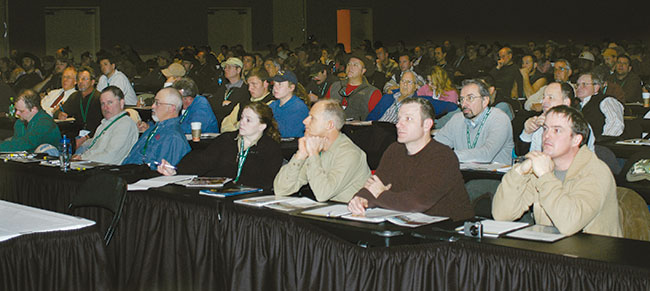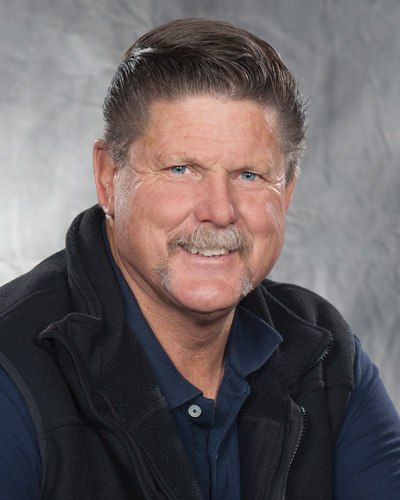I believe that the difference between successful and unsuccessful people is that successful people work on a vision of their lives every day. Successful people create their lives actively, while unsuccessful people passively wait to see where their lives take them.
In summary, successful people’s lives are intentional, while unsuccessful people live by accident.
Creating and following a business plan is a key to living that intentional life. A business plan is like a road map and is essential. It should tell you where you are, where you’ve been and where you are going. It will prevent you from living your business life by accident.
Whether you will go out on your own immediately after hoof-care school or following an apprenticeship, before you concern yourself with clients and other shoeing concerns, you have to develop a business plan. The goal should be to write one that is feasible and you will be comfortable with so that you will stick to it over time.
How To Write And Stick To A Business Plan
Your business plan doesn’t have to be complicated. There is no set-in-stone formula that is required for writing one. A good business plan should address three objectives:
- Where do you want your business to go? Your plan can be as simple as, “I want to build up to five full shoeings a day for 5 days per week.”
- How you think it will get there. One component could be, “I will return all phone calls within 24 hours.” Regardless, you have to stick to it. This contains where you are planning to advertise, such as stables and feed stores, and how you are going to do it. It may include a commitment to introduce yourself and your business to five to 10 new people every day.
- What will it cost? Figure out how much it costs you to shoe a horse. Include regular items like shoes, nails, propane and so on. Also include the cost of your vehicle fuel, vehicle insurance, vehicle registration, medical insurance, saving and retirement contributions and visits to educational events, like the annual International Hoof-Care Summit in Cincinnati, Ohio. This is the true cost of shoeing.
Write down all of this information and keep a copy of it, visible, in your shoeing rig. Check it frequently and you will be surprised how this information will push you to perform.

A business plan isn’t just dollars and cents — it is also a study of your professionalism. For example, when evaluating your business years from now, ask yourself if your shoeing rig sufficiently reflects your desired level of professionalism.
How To Set Your Prices
When you get home from school, call established farriers in your area and ask about their prices. Just say that you are new in the area and shopping for a shoer. If you come from an apprenticeship, you will likely have an idea of what farriers in your area charge.
From the information you’ve gathered, you should be able to develop a price list. Do not be the highest-priced or the lowest-priced farrier in your area. Find the middle ground.
Do not post or publish your price list, but keep it in your rig so you can be sure that you charge every client the same price for the same services.
To the upper right is a suggested farrier price list. When you have to purchase and apply specialty shoes, such as aluminum shoes, the general practices is to, at a minimum, double the price of the shoes and add that to your basic shoe price. For example, imagine that your basic shoeing price is $100 and the client wants you to use aluminum shoes in the front. You purchase a pair of aluminum shoes for $12. Your minimum price for that shoeing should be $124.
When To Raise Your Prices
The object in business is to put yourself in a position where, eventually, you are working less to make more money.
As your expenses increase (such as fuel, propane or shoes) you need to increase your prices. If you do not annually raise your prices, you will have to shoe more horses just to make the same profit you made last year.
As you grow in knowledge and skills, you will reach a point where more people will want your services. At this point, your perceived value kicks in with higher price increases.
Some farriers send a brief annual letter to their clients, assuring that they can expect the same fine services in the coming year, followed by the rates and listed price increases.
You can also use this letter to notify the clients of your professional accomplishments and development during the year with a brief description of things that will increase your perceived value to them.
Other farriers will notify clients in person. They pick a date for their price increase and tell clients of that increase. For instance, if you decide to increase your shoeing and trim fees on May 1. With each job done with regular clients after you have selected that date, notify the clients that the next shoeing or trim will be at the new price. This way, you will tell all your regular clients of the increase over the next 8 weeks. All new clients, starting on May 1, will be charged the new prices.

For Bob Smith, a key to continued business success is a commitment in your business plan to attend events like the annual International Hoof-Care Summit in Cincinnati, Ohio, for education and interacting with farriers from around the globe.
Protecting Your Business And Its Assets
The best protection for your business and assets is quality work and taking responsibility for that work. Admitting mistakes and making it right goes a long way toward preventing legal action from clients. I also recommend that you purchase business liability insurance.
Once you are established and own equipment and other assets, speak with an attorney about forming a corporation, limited liability corporation (known as an LLC) or discuss other ways to protect your personal assets. Seek competent legal advice for these decisions. ?r
Bob Smith owns and operates the Pacific Coast Horseshoeing School in Plymouth, Calif. He is the 2009 recipient of the American Farriers Journal and Delta Mustad Hoofcare Center’s Summit Achievement Award for volunteerism in the equine community.








Post a comment
Report Abusive Comment